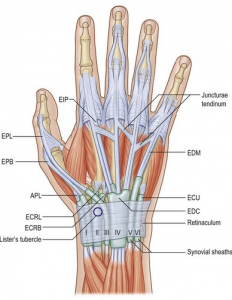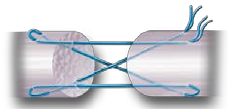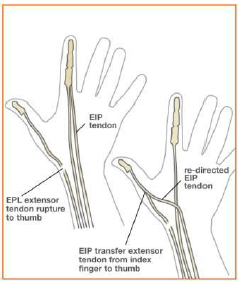Extensor Tendon Injuries
What is an extensor tendon?
The extensor tendons are on the back of the hand and wrist. They extend the fingers. The muscles for the extensor tendons attach in the forearm and go through tight compartments/pulleys on the back of the wrist before inserting on the finger.
The index and small finger have 2 tendons, the long and ring fingers only have one extensor. The thumb has two extensors that attach at different joints.
How are extensor tendons injured?
Because they are so close to the skin, extensor tendons are easily injured with traumatic injuries and lacerations. They can also rupture due to excessive swelling due to a fracture or rheumatological condition.
How do we treat extensor tendon injuries?
Extensor tendon injuries are usually easier to treat than flexor tendon injuries. They also have better postoperative results. Acute lacerations are treated with primary repair. Ruptures are usually treated with a transfer of one of the extra tendons to the injured one. The most common rupture is to the long thumb extensor. We take the extra index tendon and transfer it to the thumb tendon.
Is hand therapy required for extensor tendon injuries?
Absolutely. It is important to have a therapist make a custom splint for the patient based on their level of injury as well as helping to increase better outcomes. We often send the patient to the therapist prior to surgery to get acquainted and to make a splint
What is a tenolysis?
A tenolysis is cutting the scar around repaired or injured tendon surgically. This is often done under local anesthesia to ensure proper range of motion. Sometimes this is needed after surgical repair.




